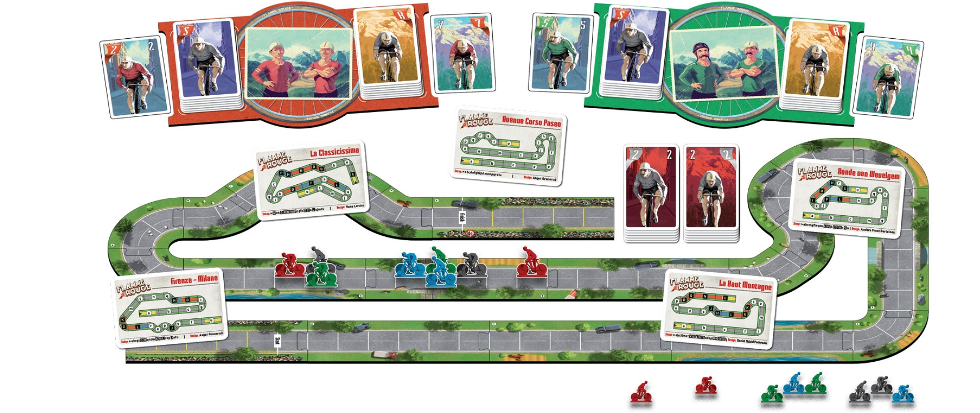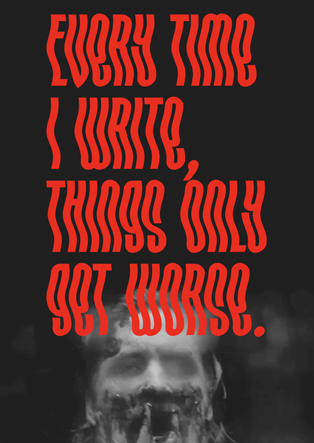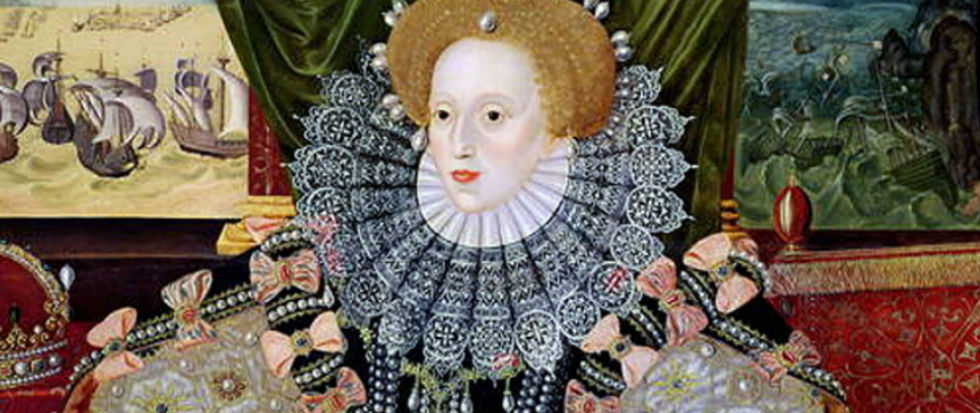
Flamme Rouge Earns the Yellow Jersey
Racing games have never been in my wheelhouse. They tend to feel too random when held up against the significantly more skill-based euros that I generally gravitate towards. That might sound shortsighted on my part, an unwillingness to branch out into genres I typically steer away from, but it’s impossible to deny that winning something like Formula D comes down to chance more often than not. Flamme Rouge, a 2016 bike racing game by designer Asger Harding Granerud, does little to buck this trend, but a unique emphasis on choice makes it much more digestible.
In Flamme Rouge, players control a pair of competitive cyclists in 1930s France. The “sprinteurs” excel at moving very quickly but are more likely to tire themselves out quicker. Meanwhile the “rouleurs” can’t move quite as fast, but are more well-rounded and better at pacing themselves. A successful race requires carefully balancing the two cyclists, and the winner will usually be the player who times their moves just right.
Movement is handled via card draws; each turn, you’ll draw four numbered cards for each cyclist, choose one, play it and move the cyclist that many spaces forward. The cards that you played are then removed from the game. It’s simple stuff, but the fact that you draw four cards provides some surprisingly tough decision-making, and because you discard each card you play there’s a significant weight to your choice. Savvy players will keep track of what cards have been played around the table, but it admittedly makes little difference since luck still plays a large role.
Where the skill of the game shines most is in the hills. Ascents limit movement to a five space maximum, so playing more valuable cards is wasteful. On the other hand, descents cause you to move a minimum of five spaces, making them the perfect time to dump those lower value cards from your deck. Timing your cards on ascents and descents is a very satisfying metagame that, despite the simplicity, makes you feel smart.
My favorite part of Flamme Rouge is the theme. Racing games are a dime a dozen, but they usually involve cars. The cycling theme feels fresh and new, which greatly contributes to the overall enjoyment. Another advantage Flamme Rouge has over other racing games is the customization. Where other games force you to buy new courses, the track pieces in Flamme Rouge can be arranged into any layout you want, and the game includes several layouts based on real life routes. The imagination runs wild with what might be possible given a few expansions. I’d love the chance to build a colossal table-sized track to race on.
It would be easy to decry Flamme Rouge as luck-based, requiring little actual skill to stay competitive, but every game I have played–including our first–finished in around 30 minutes. If a game lasted an hour or more as in Formula D, I would most likely consider it a bust, but the short playtime feels like just the right length for what it offers. As it stands, I plan on adding Flamme Rouge to my regular rotation for family game night.





